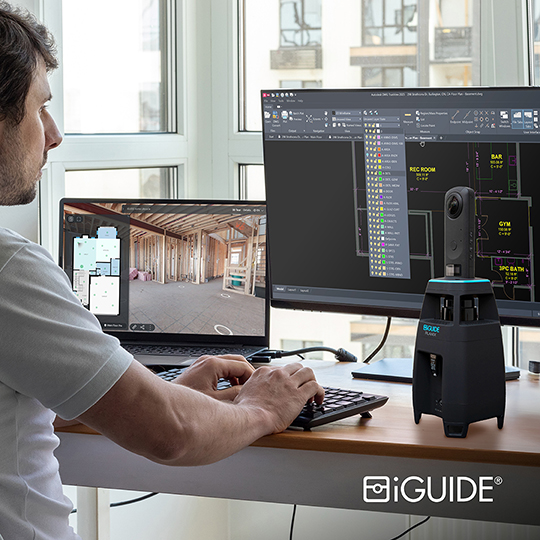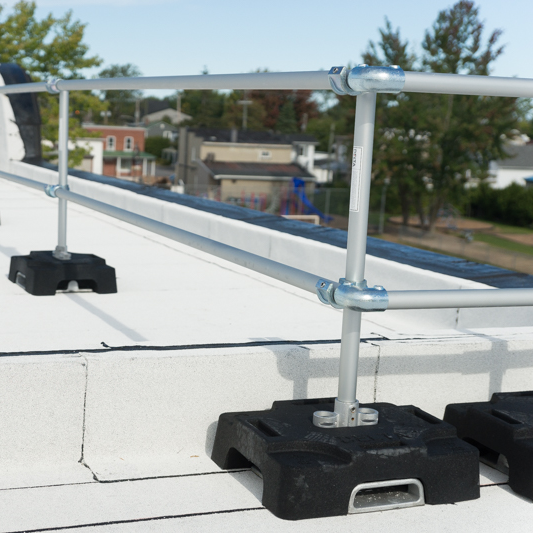Smart cities: building a sustainable future

For a new building, planning for smart devices as early as possible is ideal, the presence of cameras, sensors, and other devices will inform the layout and extensiveness of a building’s network and power infrastructure. A large internet protocol (IP) network can power and connect the building’s smart devices, allowing them to integrate with one another and operate at peak efficiency.
On a larger scale, cities must be prepared for the increased power draw which comes with an increase in smart devices throughout the city. Obviously, each individual device draws a small amount of power, but when a smart city initiative leads to the installation of thousands of cameras and sensors throughout the city, the increased power draw can become an important factor to consider.
Scalability
An important aspect of smart building technology is its ability to be scaled into the future. Cities will continue to grow, and this means smart systems will have to keep pace with this expansion. Implementing smart lighting systems, for example, may be relatively simple when done for a few major community areas within a city, such as parks. However, the same smart lighting system needs to be able to handle future expansions which will involve more devices over a greater area.
Can this network and power infrastructure handle that expansion? Can the current city work force adequately maintain and monitor the lighting systems? Questions such as these must be asked and addressed when it comes to implementing smart city solutions, as a lack of foresight and planning will lead to issues further down the line.
Even something more traditional, such as a surveillance system, must consider scalability. If the amount of IP cameras in a smart building increase, the network infrastructure needed will also increase, along with the required storage capacity of the network video recorder. For a building engineer, these considerations will affect the planning process as well as the project’s pricing and should always be kept in focus. Designing a system which can handle thousands of surveillance cameras might seem to be an overkill by today’s standards, but decades from now, it may prove to be an invaluable investment.
Local politics
Perhaps the most variable challenge on this list is political opinion surrounding smart buildings and cities. Some smart buildings and cities may wish to integrate technologies and practices which could be the recipient of legal pushback. Political opinions may differ on the importance of smart city projects, and a shift in government parties could undo the efforts of previous political leaders. This is mostly out of any engineer or architects’ control, but it is important to stay up to date on the opinions of politicians regarding smart buildings and cities.
Security issues
Just as any aspect of building management, the data and systems used in smart buildings must be kept secure. In the event of a data breach or system disruption, several key pieces of infrastructure could be brought down simultaneously, or large swathes of personal data could be compromised. The centralized nature of smart building systems is both an advantage and a risk. For example, a building which uses smart surveillance systems to monitor optimal lighting, HVAC operation, and secure access options could be greatly impacted if its surveillance system was brought down by intruders or malicious actors. Smart building systems must be treated with the same amount of gravitas that other key pillars of building management are granted.
Data processing and analytics
Smart buildings and cities are built on data collection, aggregation, and analysis. Data collection is perhaps the most straightforward aspect, as smart devices are constantly collecting data, and the best products will organize and display it in helpful ways. Data points are created by defining a discrete unit of information. In a smart surveillance system, a data point can be defined as the number of people currently in a room or how many people have entered a specific area over the course of a day. Sensors can be programmed to collect information; however, collecting this data is only half the battle. It must be aggregated and then analyzed into interpretable information to promote sustainability and business development efforts.
So, how can data be made interpretable?
Datapoints gathered through monitoring can be harnessed into information through centralized hubs such as dashboards or command centres. These analytic tools process the data into usable insights through grouping and cleaning data points. Having data stored in a centralized database makes it easier to process, interpret, access, and export for the business partners involved. In a smart surveillance system, it is possible to analyze how many people entered a specific area over the course of a day compared to yesterday, the last week, or the year prior; then by incorporating data points such as the weather or time of the day, users can impact the output, and turn it into analyzed, actionable data.







